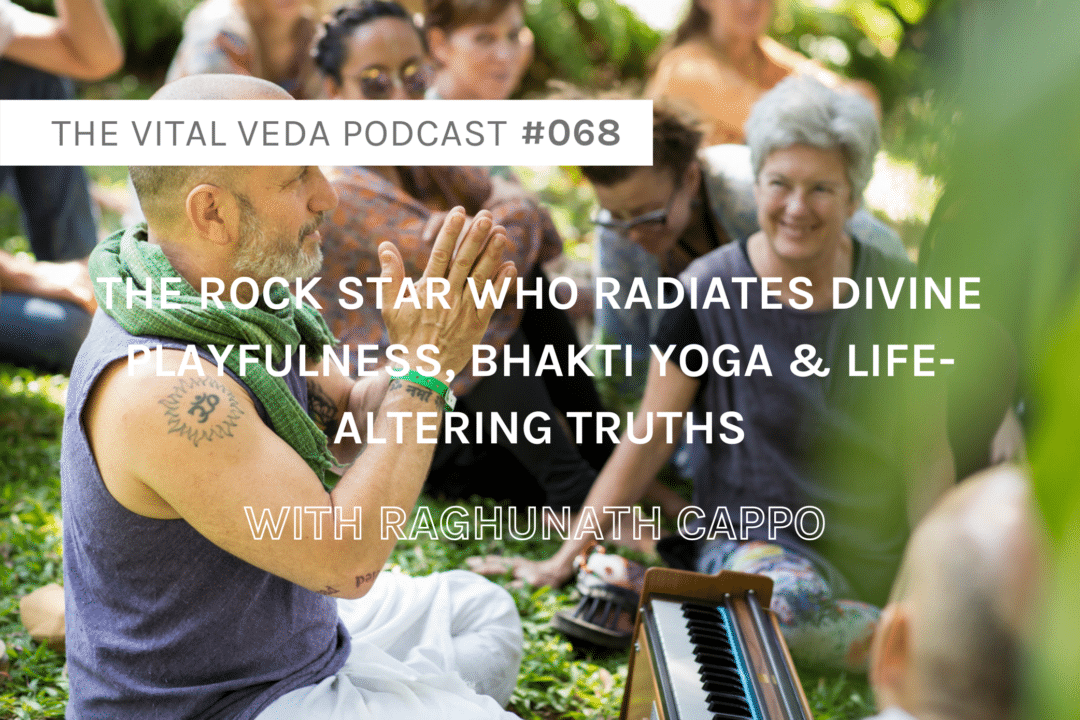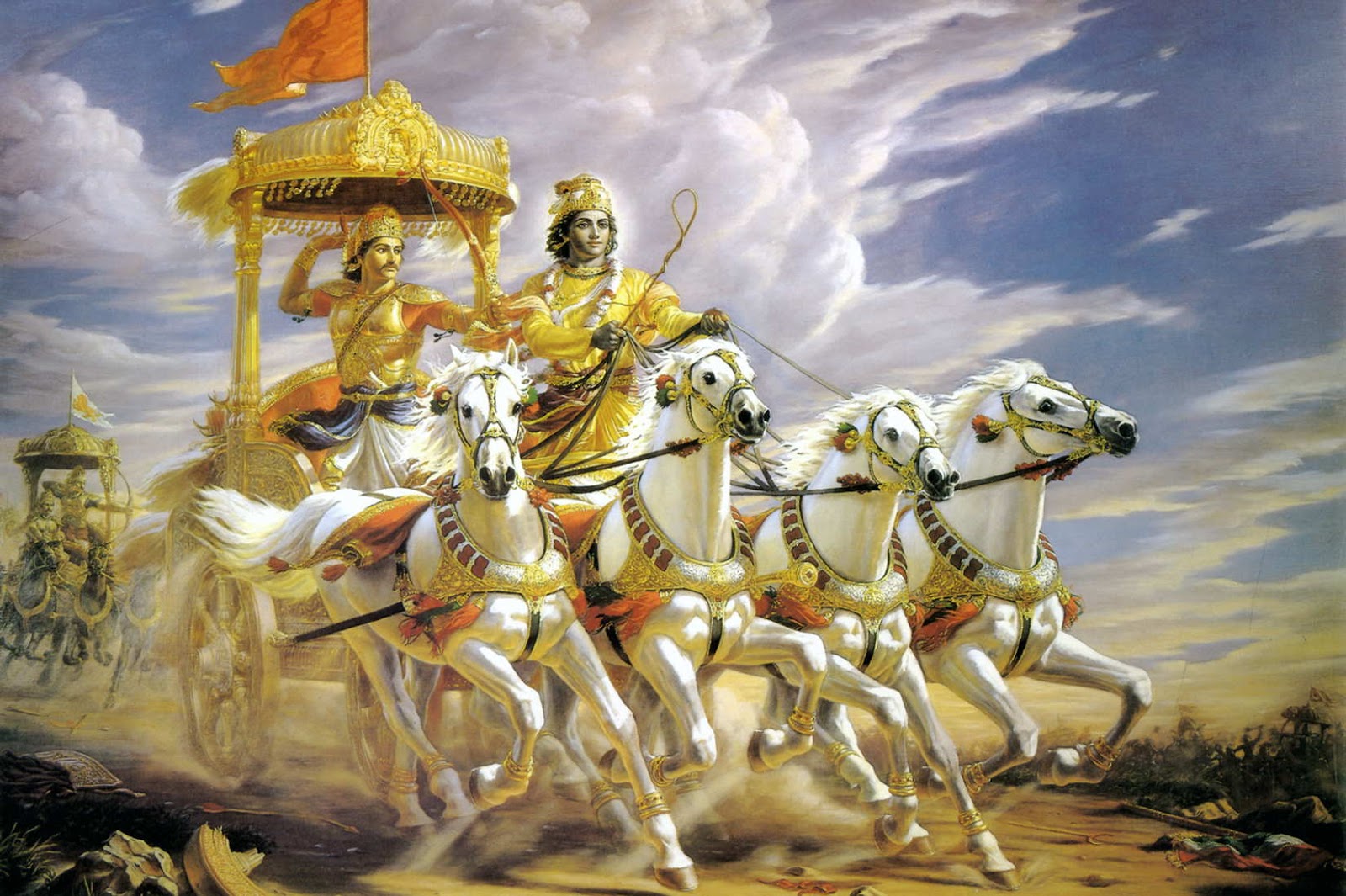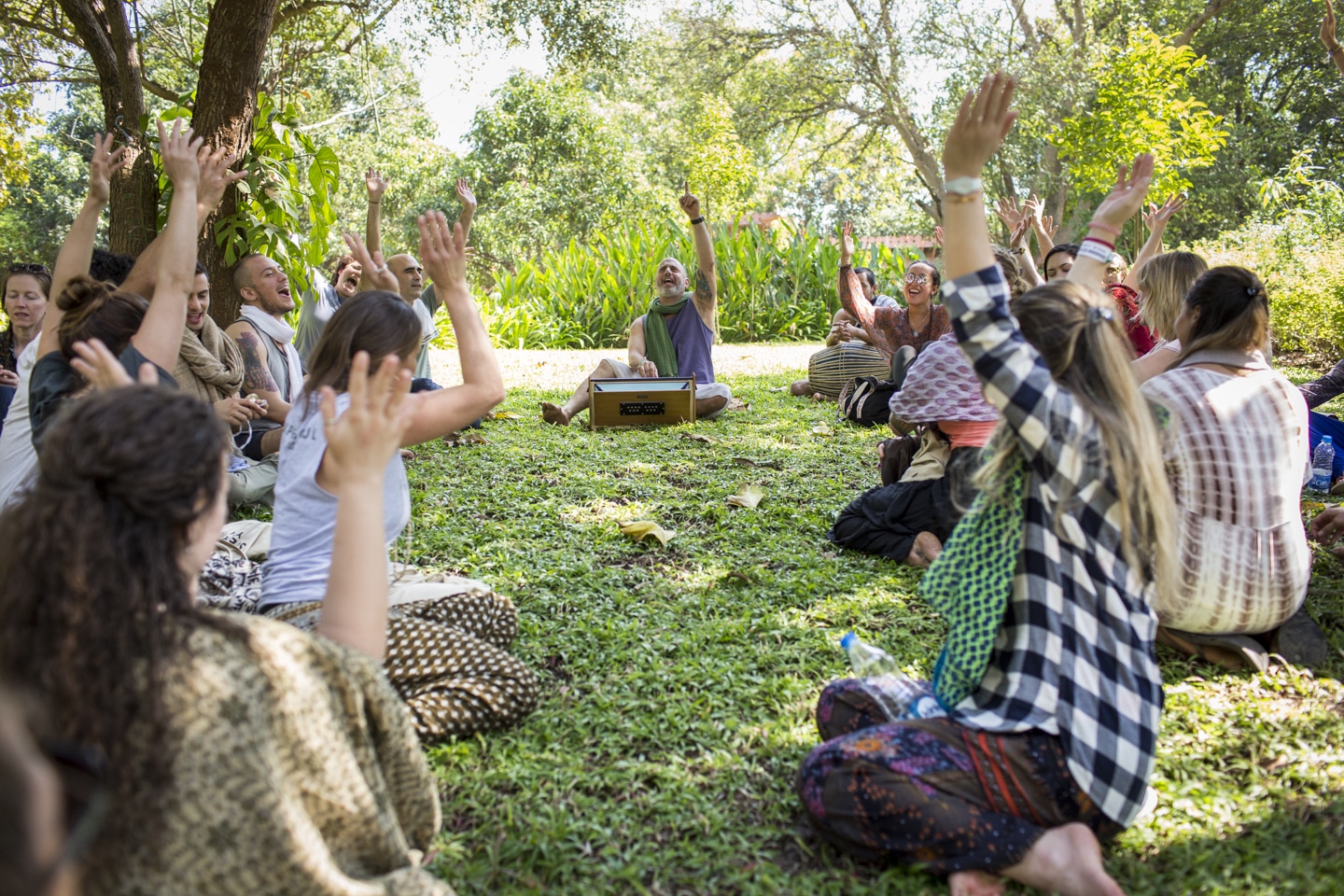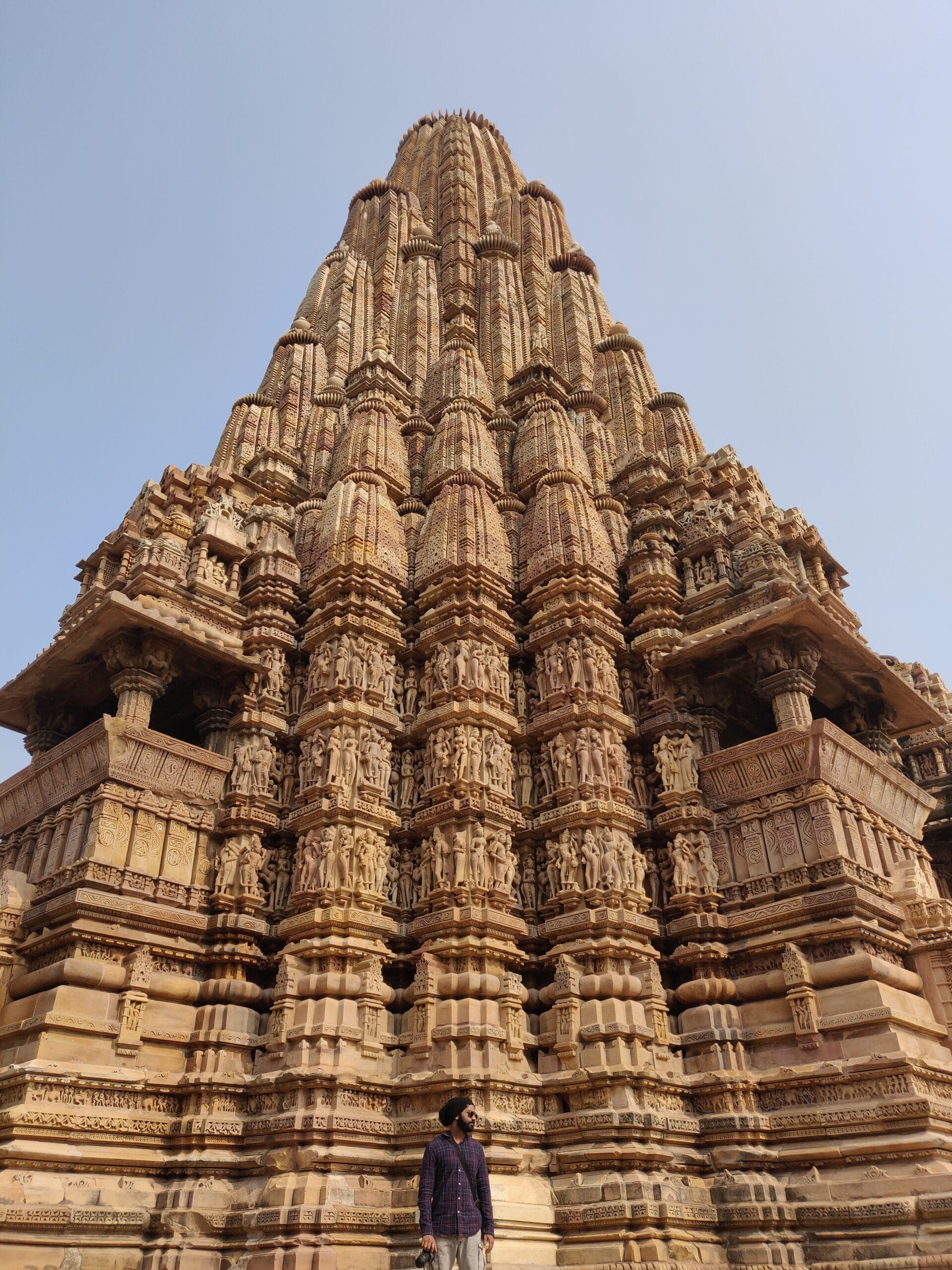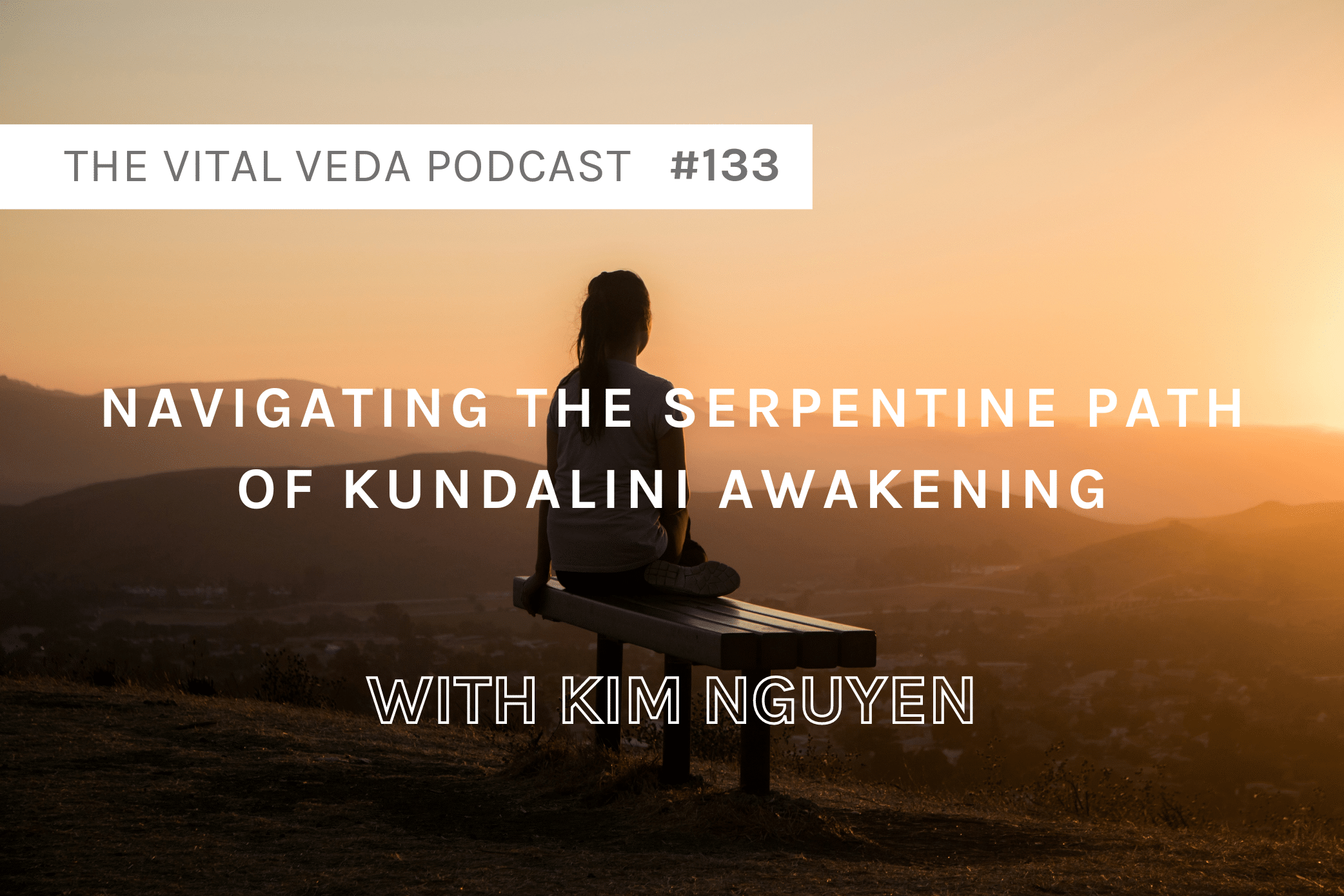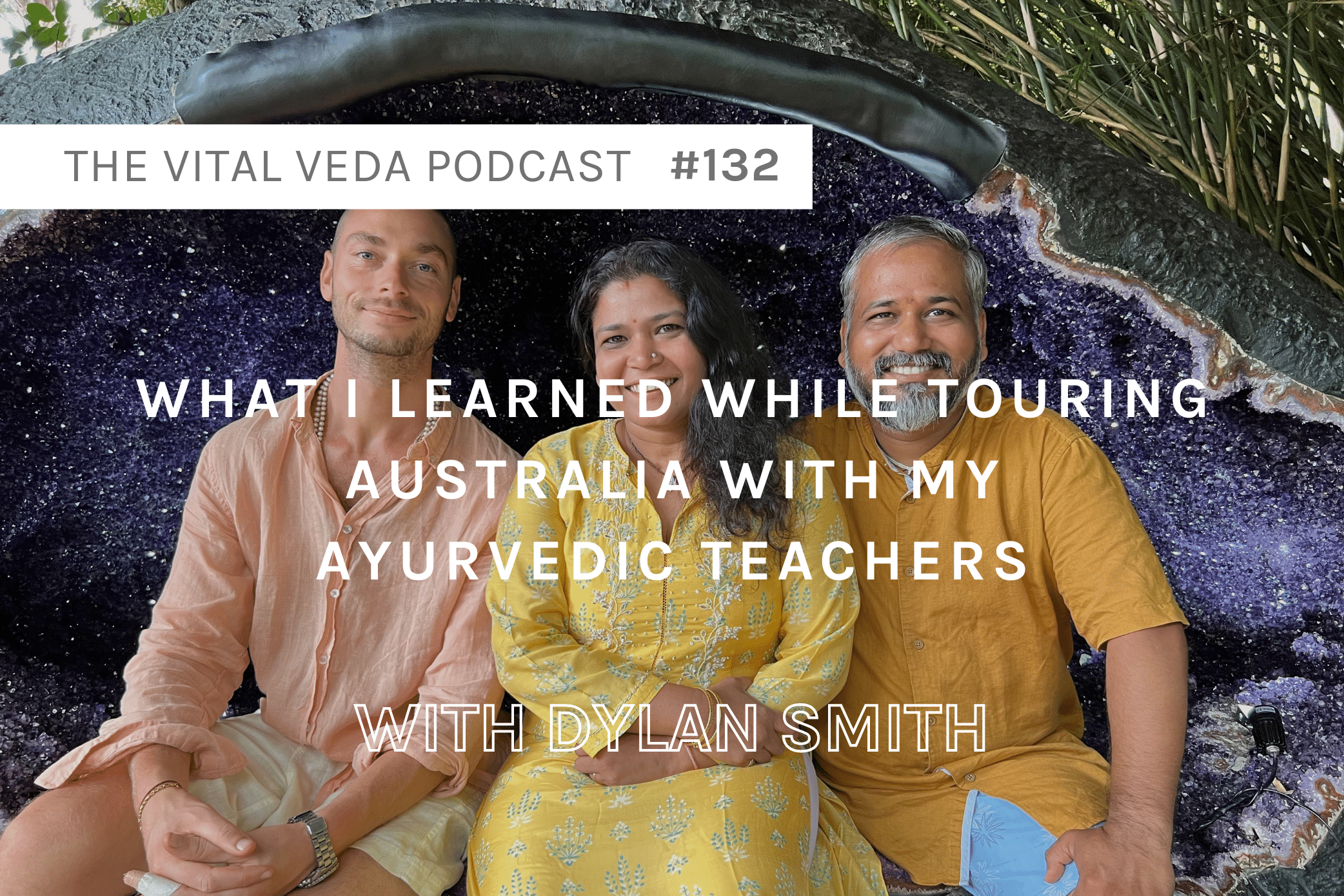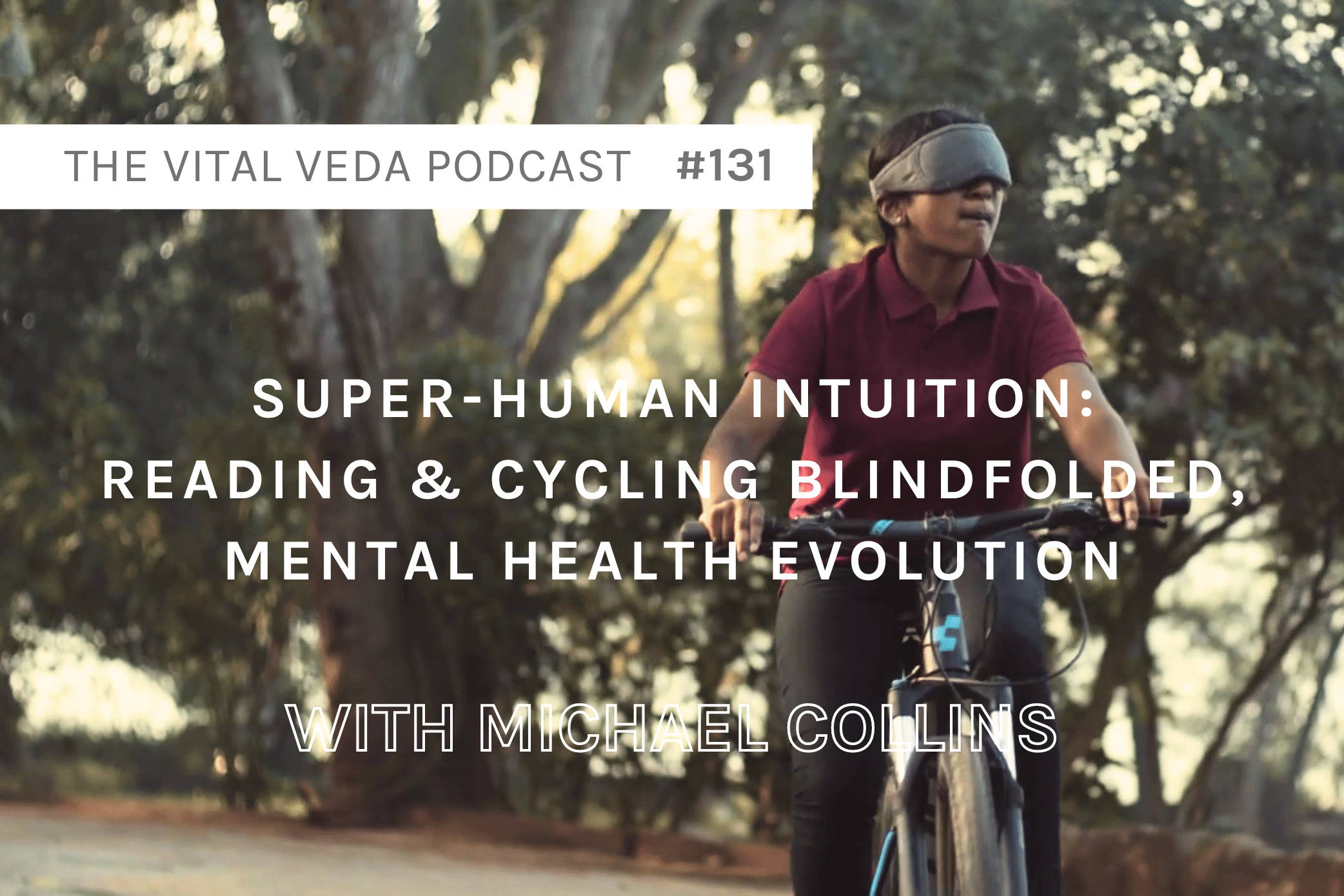In this episode of the Vital Veda Podcast we have a very special guest, Raghunath (Ray) Cappo, who has a wonderful life-story & absolutely profound teachings to share.
A hardcore punk rockstar turned celibate monk turned teacher of all things Vedic.
Raghunath (Ray) Cappo achieved great fame & prominence within the punk-rock scene in the 80s, and yet decided to give it all up and wholeheartedly dive into a purely spiritual path.
For 6 and a half years he became a celibate monk of the Hare Krishna Bhakti-Vedanta tradition and now dedicates himself to teaching & enlightening others with the powerful knowledge he attained during his wonderful lifetime.
ABOUT OUR GUEST: RAGUNATH CAPPO
By the late 1980’s, Ray Cappo’s punk rock band had tens of thousands of fans. Ray was a trendsetter in the centre of hardcore culture.
Then Ray discovered Bhakti Yoga, became a monk, and became “Raghunath.”
Interestingly after that, he started another punk rock band called “Shelter”, which became even more successful.
All members of the Shelter band were Yogi monks who would tour all over America & the world, singing to large crowds about clean living, self-mastery, vegetarianism and God through hardcore punk music.
Now he’s the opposite of a monk and punk rocker.
Raghunath is a devotee to the Vedas and Bhatki Yogi who is magnificently relevant at integrating vedic wisdom with the modern world and sharing it in the most playful way.
He is a yoga teacher, spiritual storyteller and he is Born to Give.
IN THIS EPISODE WE DISCUSS:
Table of Contents
Shifting from Rajas and Tamas to Sattva
The self realization that allows for the letting-go of toxic habits.
The power behind realizing this truth for one’s self (pratyakṣa) as opposed to it being “preached” to us.
The Punk Rock Days
Being very attracted to the counterculture but not so much to the lifestyle of drugs & alcohol that is often linked to it.
Becoming a vegetarian early in life & taking an interest in Ayurveda, but resources were very scarce at the time.
His First Hardcore Punk-Rock Band “Youth of Today”.
All of his fellow band members became interested in topics such as clean living, positive attitude, vegetarianism, animal rights & karma, so the mission of the band sort of became to rally people into these subjects.
The lyrics were mostly about these topics.
The cover of Youth of Today’s first studio album “Break Down the Walls”.
This marked the beginning of the “straight edge” punk rock movement in the early 1980s.
When the band started gaining popularity and the movement started to grow, Ragunath felt a rise of unhappiness & started to feel uncomfortable with his own ego.
He then decided to quit the band and move into an ashram in India to live a monk life.
Studying the Bhagavad Gita
The Bhagavad Gita is one of the most famous and important Hindu texts.
It is the conversation between Lord Krishna & his cousin Arjuna during the Mahabharata (the war at the dawn of the ages).
In this conversation Arjuna explains that he doesn’t want to fight in this war anymore because it pains him to kill his own kin. He instead wants to become a renunciant & go live a spiritual life immersed in meditation.
Krishna answers that everyone has their own dharma (action in any given moment that leads to both the evolution of the individual & the collective consciousness), and that he cannot run away from this duty as a Kshatriya (warrior); doing so will only increase his suffering & that of the collective.
Krishna riding the chariot and Arjuna shooting arrows in the Mahabharata
We therefore have to use our god-given gifts, and put them to work towards dharma – towards a selfless action that helps the soul evolve & our communities to expand in consciousness, while not feeding the ego.
Understanding the teachings of Krishna in the Bhagavad Gita made Raghunath realize that he had to use his gifts as a musician & lyric writer and put them to work towards a higher goal that would allow him to enlighten others as well as his own spirit.
It is then that he started his second band called “Shelter” along with fellow Hare Krishna punk rock musicians.
The idea was to make music imbibed with Vedic teachings, but in a language that his audience could understand.
Shelter established the Krishnacore punk rock subgenre & became even more famous & popular than “Youth of Today”.
An Overview Of Bhakti Yoga
Bhakti Yoga is the spiritual path where loving devotion is focused towards a personal deity.
It’s not so much a mechanical process but a mental disposition in which one deposits pure devotion & love on god.
It implies the recognition of one’s true self as a pure spirited soul that is immersed in a material world, and understanding that the only way to achieve unity with the whole is by serving God with love and devotion.
The process often linked to bhakti yoga consists of: japa, kirtan, puja, the dedication of all activities to the divine no matter how mundane or extraordinary they are, and the capacity to see divinity in absolutely every living entity.
Kirtan कीर्तन
Kirtan or Kīrtana is the devotional chanting of hymns, mantras and the praise of deities; when done by a collective together it is called sankirtan & when taken to the streets it is called Nagarsan kirtan or Harinam.
Chanting the holy names of God (kirtan & japa) is one of the five potent items of bhakti yoga according to the Caitanya-caritāmṛta of Caitanya Mahāprabhu. The other 4 being:
Association with devotees
Hearing the Śrīmad-Bhāgavatam
Residing at a holy place
Worshiping the Deity with faith and veneration
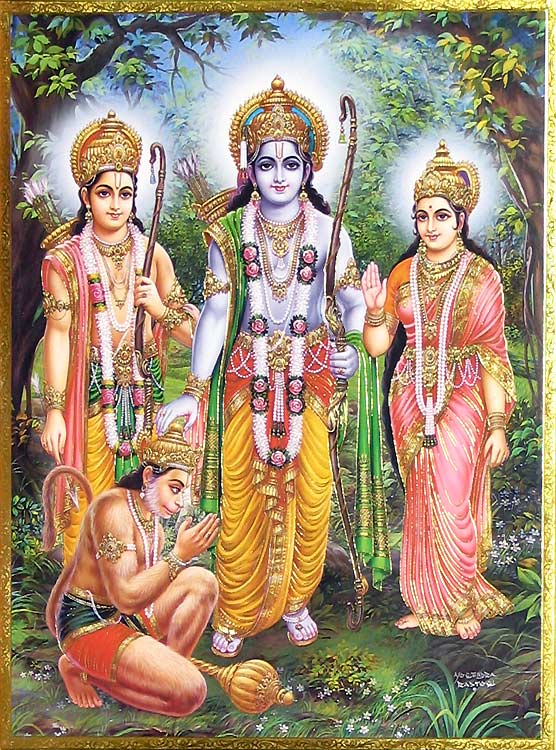
It is said that even if a person who knows absolutely nothing of Vedic wisdom experiences kirtan, there is a possibility they can feel what it’s like to be a paramahamsa (a god-realized person).
Ahimsa अहिंसा
Ahimsa is the principle of non-violence.
It is one of the five yamas (restraints for “right-living”) that Maharishi Patañjali elaborates on in the Yoga Sutras.
By merely living on earth, one is enforcing some form of violence towards other living beings. The practice of ahimsa implies one being able to see God in everything & worshiping him by trying not to enforce any sort of violence towards any of its infinite forms.
Ahimsa is a practice that precedes asana (the postures commonly known as Yoga in the west).
The yogic belief is that true success in Yogasana can only be attained if the Self is purified in thought, word, and deed through the self-restraint of ahimsa.
Yātrā यात्रा
Commonly translates to “pilgrimage”.
Raghunath explains the subtle & more explicit types of Yātrā:
One ideally makes time every day for some form of spiritual focus (tends to be early in the morning & sometime in the afternoon/evening [e.g. meditation]).
Throughout the month one can take one weekend or one day per week for deeper spiritual sadhana (practice).
In a season, one could go away for one entire weekend and have a full retreat devoted to spiritual pursuits.
Within the year, one ideally goes at least once on a proper pilgrimage or Yātrā. It is here where one deeply and wholeheartedly dives into spiritual culture all day, every day & for an extended period of time.
This is a very impactful opportunity that has paradigm-shifting effects on those who go ahead and do it.
Raghunath organizes spiritual retreats every year to different places around the world.
This is the ancient Indian way. There never were luxurious theme parks or all-inclusive hotels; one simply took their family to holy places.
Those experiences will forever be remembered by children & will leave a strong imprint on them.
Raising Children To Be Devoted To Divine
The idea of creating “a new normal” for children.
Teaching them from a very young age about spiritual life & the ways in which they should engage and commune with nature & everything that surrounds them.
The 6 Pillars of Bhakti Yoga
6 pillars that one can apply to life, whether one is a spiritual person or not, that will have a deep impact in your life:
- Do not criticize:
Criticism is us trying to correct the world, and it generally serves as a smoke-screen that we use to avoid working on our own problems.
This doesn’t mean that we do not discern right from wrong, but simply that we do not take great pleasure in finding faults in other people. - Be tolerant:
Instead of complaining, one is tolerant.
The one who complains on a regular basis is signing a contract with itself to be miserable. - Take no offense:
To the degree that one is offended, one suffers.
Not walking around with resentments.
Being able to let go of past resentments from traumatic experiences or because of the feeling that “people are out to get me” which usually lead one to find offense where there is not. - Be quick to apologize:
It’s easy to forget our own shortcomings when we hurt other people & yet we get resentful when others hurt us.
One should be very self-aware of one’s own shortcomings & be quick to apologize to others. - See the good in others:
For some people it is very hard to see the good in others. That is a very diseased condition that only perpetuates suffering.
See the good in others & let them know it. Tell them how you feel & why you appreciate them.
This practice alone can change your whole life. - Be grateful and keep a tally of your blessings:
Being aware of all the reasons for which one can and should be grateful is a very powerful tool to bring awareness and joy into your life.
For those people who are suffering from mild depression, this can completely shift their perspective & pull them out of that unconscious state.
Advice: open up a note on your phone and write 20 reasons why you are blessed; read it every morning and add two more reasons to the list. Try to make that a morning practice.
RESOURCES:
SUPPORT THE SHOW
Please leave me a comment below (I love to read every single one).

